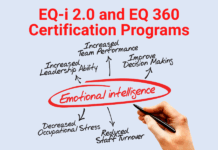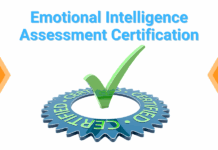
HBDI® stands for Herrmann Brain Dominance Instrument®. Here’s what it is, how it works, where it came from.
The HBDI® is not about what you think, but it certainly is about the way you think. It's about thinking preference and how that varies in individuals.
Let's start with the “H,” which stands for Herrmann. Ned Herrmann is the man who developed The Whole Brain® concept and created the instrument, the HBDI®.
Ned was the first person who pioneered the study of the brain in terms of its application in the field of business. It was actually born to solve a very specific business issue. Ned Herrmann was in charge of the Management Development section of GE's University. Ned was given the job of making GE managers more creative. It was in doing this that Ned developed what has become known as The Whole Brain® Model and Whole Brain® Thinking.
The “B” in HBDI® stands for brain. Ned Herrmann's work was based on the brain and its application to business.
In the last 30 years, our understanding of the brain has exploded as technology has allowed us to look inside the brain to see how it works. Neuroscience is beginning to have a huge impact on business and education, as well as our health and well-being.
The work Ned Herrmann did was about looking at the brain in terms of its application and what it does, which is thinking. Ned was able to come up and develop what is known as The Whole Brain® Model.
The Whole Brain® Model is a four-quadrant model, which represents the four major thinking styles. It helps you make sense of people and the way they think.
The four quadrants are blue, green, red, and yellow.
The “D” in HBDI® stands for dominance. Like any personality assessment, the HBDI® places you in the categories that have your dominant characteristics. We develop dominant thought patterns. We develop preferences for certain ways of thinking. It's that preference that the HBDI® measures.
The Four Types:
Blue: The HBDI® blue quadrant is the fact-based area of the brain. Those with a high preference here have a strong logical and rational side. They are analyzers and often find mathematical, technical and problem solving thought processes more natural.
- A famous blue is Bill Gates.
- A typical blue profession is an engineer.
- Blues are interested in the what of given situations.
Green: The HBDI® green quadrant is the form-based area of the brain. Those were the high preference here, have a strong organized and sequential side. They are planned and detailed in their approach, often wanting a plan of how we get there and the desire to know the next steps.
- A famous green is Queen Elizabeth II.
- A typical green is a project manager.
- Greens are interested in the when of any given situation.
Red: The HBDI® red quadrant is the feelings-based area of the brain. Those with a high preference here can be great communicators. They have a fantastic interpersonal skill and are often musical with a spiritual side to their thinking.
- A famous red was Mother Theresa.
- A typical red profession is a teacher.
- Reds are interested in the who of given situations and bothered about relationships.
Yellow: The HBDI® Yellow Quadrant is the future-based area of the brain. Those with a high preference here are the ideas people. They are imaginative, holistic, and conceptual thinkers.
- A famous yellow was Einstein.
- A typical yellow profession is an entrepreneur.
- Yellows are interested in the why of any given situation.
Bear in mind that you can be a mixture of all of these. Or sometimes you're just one of them. We can all use each quadrant, but we have preferences and these preferences can change depending on the situation we are in.
The “I” in HBDI® stands for Instrument. The instrument was developed by Ned Herrmann to give people an understanding of their thinking preference in terms of The Whole Brain® Model.
The HBDI® asks you 120 questions. These questions come from a range of different areas of life: work, home, hobbies, outside interests, school, education, problem-solving, creativity. That information makes up your HBDI® profile.
The Power of the HBDI®:
- It’s valid, research-based, and clear. 99% of people when they get their HBDI® look at it and go, “Ah yes. Ah, that makes sense. That explains it. Now I understand why.” People walk away with a working understanding of their thinking preference, without spending a ton of time on it.
- It’s highly actionable, able to be applied to all contexts and implemented quickly. Once you understand your thinking, it doesn't matter what you're doing, your understanding of your thinking preferences applies to all those contexts. One model, one instrument, multiple applications.
- It’s non-judgmental, simple, and gives you the capacity to develop.
- It’s positive, personally memorable, and about people. The HBDI® is designed that there is no good, there is no bad, there is no right, there is no wrong. Each quadrant is just as valid as another. Sometimes one is more appropriate, but all are good. It's all about people. Not only you but the people you work with and interact with.
The instrument is not so much an assessment, but a self-development instrument. So you can say, “Okay, I want to do this, therefore I can now look at my HBDI® Profile and know how I need to move and grow to achieve that.”
So how do organizations use the HBDI®? They really start at an individual level. Businesses love HDMI® because you don't have to spend days creating that deep understanding. You get it very quickly, and then you can develop a deeper understanding.
A lot of people use this technology for executive coaching as well. It’s great for teamwork and as a way to look at the way an organization thinks as a whole. Obviously the more you use it, the greater the impact. But again, it all starts with you.
Here are four quick tips for how to use HBDI® at work:
- Presenting: Make sure that there is something for everyone in your presentation. Facts for the blues, shopper insight for the reds, the future for the yellows, and next steps for the greens.
- Emailing: When you reply to an email, try to guess first from their email, which color they are, and then tailor your next email to them to be more like them.
- Meetings: In your next meeting, look at the presentation and try to guess which color wrote it. Then ask yourself, which color would this appeal to most and least?
- Team: At your next team meeting use HBDI® to solve a problem. Take each color in order and ask, “Blue, what facts do we know about this problem and still need to know to solve this problem?” And then move onto the next color.







